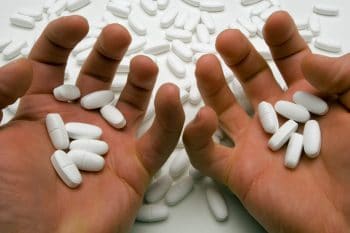
What Are the 5 Most Addictive Opioids?
The social and economic consequences of addiction in the U.S. are among the gravest public health issues today. For the first time in American history, people are more likely to die of an Opioid-related overdose than from a motor vehicle accident. In 2017, 70,237 Americans died from a drug overdose; 67.8% of which involved Opioids. The 5 most addictive Opioids are involved in the vast majority of Opioid-induced overdose deaths.
What Makes Opioids So Addictive?
As a category of narcotics, Opioids include all Opium-derived analgesics as well as man-made synthetic Opioids created to mimic the effects of Opiates. As such, Opioids work on the same pain and pleasure receptors in the brain and have similar effects on the body. The drugs’ differences come from varying potencies, the addition of other medications (like acetaminophen), and routes of administration (like taking a pill or smoking). The addictiveness of some Opioids over others can thus be determined by the intensity of the reaction it causes in the brain and body, its street and medicinal value, how quickly it causes dependence, and how severe withdrawal from the drug can be.
The 5 Most Addictive Opioids Include:
5. OxyContin®
The Centers for Disease Control and Prevention list Oxycodone (and the now infamous brand name version, OxyContin®) among the three Opioids most commonly involved in prescription Opioid overdoses. Currently, the makers of OxyContin® (Purdue Pharma) are being sued for allegedly engineering and profiting from the Opioid Epidemic. In 2013, 58.8 million Oxycodone prescriptions were dispensed in the U.S.
OxyContin® is categorized as a long-acting Opioid, intended to treat round-the-clock, chronic pain. Yet, reports of an approximate 40% immediate-release and reduced periods of effectiveness cause many people to take it more frequently than is prescribed. Moreover, individuals can become dependent on OxyContin® in a relatively short period of time and will need to take larger doses to prevent symptoms of withdrawal.
4. Methadone
When taken under the direction of a licensed medical professional, Methadone can be effective in the treatment of Opioid addiction. One dose can alleviate pain, prevent painful withdrawal symptoms for about 24 hours, and reduce cravings. For most people, Methadone does not induce the “high” of other Opioids. Unfortunately, these same benefits cause some people suffering from a Substance Use Disorder to abuse the prescription medication– most who abuse Methadone suffered from a prior addiction. They may have even visited a Methadone clinic in an attempt to recover.
Methadone is in the top three of Opioids most-commonly found in Opioid-related overdose deaths. Patients can become dependent on Methadone and can experience withdrawal if they miss a dose. They can also overdose on Methadone if they take too much. Due to its gradual onset, people typically fall asleep then quit breathing. In 2016, for every 4.5 Opioid deaths involving Heroin, 1 involved Methadone.
3. Morphine
Morphine has been one of the most addictive Opioids since its discovery in 1803. In 1853, when it was first injected via syringe, the effects were immediate and three times as powerful. Eventually, Morphine addiction grew to such proportions in Europe and North America that the Bayer pharmaceutical company created and marketed Heroin (by distilling Morphine) as a step-down cure.
Today, Morphine is still the “gold standard” for pain relief; all analgesics are measured in Morphine equivalency units. Prescriptions are available as a liquid or pill and in long- and short-acting varieties. The rush of euphoria Morphine causes is due to a release of dopamine in the brain’s reward response center. Once the drug’s high ends, a “crash” can bring intense cravings to resume use and reinstate the euphoria.
2. Heroin
Heroin was first created by boiling Morphine over a stove in 1874. In less than 30 years, Heroin addiction rose to such alarming heights that Congress banned Opium (the poppy plant from which it’s derived). As of 2018, between 4% and 6% of people who abused prescription Opioids eventually turned to Heroin. Nearly 494,000 people reported using Heroin in the previous year; over 15,400 people died of Heroin-related overdose.
Heroin is a rapid-onset, short-acting Opioid with intense highs and crashes. It is exceptionally addictive regardless of the route of administration, though smoking and injection allow it to reach the brain the fastest (and may contribute to faster development of addiction). A Heroin Use Disorder is one of the most difficult to overcome and often requires medically-supervised detox and an extensive addiction treatment program. Even so, up to 60% of people with a Substance Use Disorder relapse at some point in their recovery.
1. Fentanyl
Though it can be lethal in as little as two milligrams, Fentanyl is one of the most addictive Opioids today. Fentanyl, a synthetic Opioid, is one of the most powerful Opioids available–it is up to 50 times more powerful than Heroin and 100 times as potent as Morphine. It is made in pharmaceutical labs as well as illicitly manufactured by drug trafficking organizations. The Fentanyl patch (Duragesic®) is a long-acting pain reliever originally intended to treat the pain of cancer patients. Actiq® and Fentora® are rapid-onset variations for breakthrough pain of cancer patients already taking Opioids. These brands have been diverted for illegal sale, yet most Fentanyl-related deaths come from illicitly manufactured varieties from China and Mexico.
In 2017, over 28,000 overdose deaths involved synthetic Opioids (not including Methadone)–more than any other type of Opioid. The rate of overdose deaths involving synthetic Opioids is also on the rise. Counterfeit painkillers commonly contain Fentanyl and have contributed to a sharp increase in overdoses–including the death of Prince after taking a counterfeit Vicodin® made with Fentanyl. Drug dealers have also begun to “cut” other types of drugs (like Cocaine and Meth) with Fentanyl to augment their effects and increase their addictive potential.